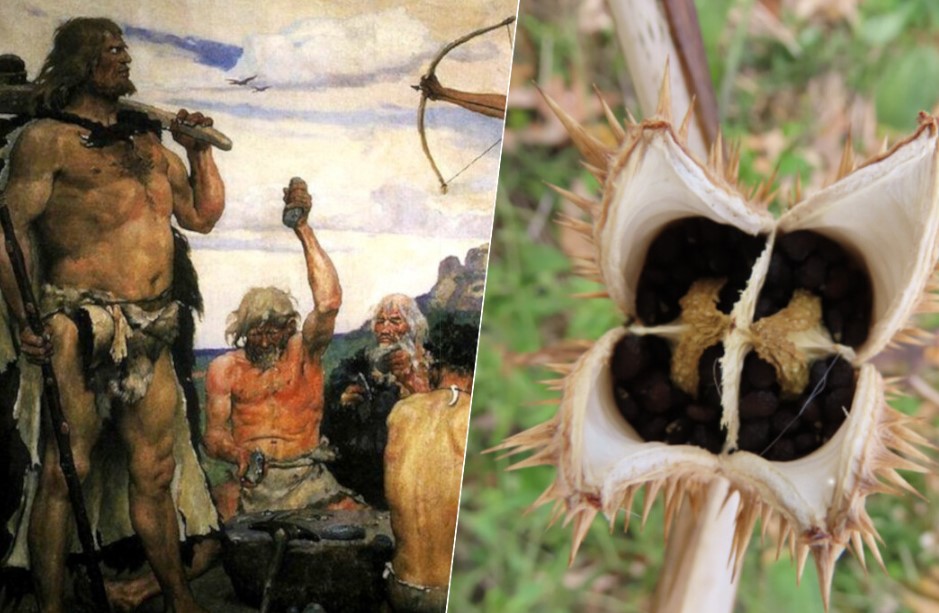A few strands of hair dating back 3,000 years, hidden in a corner of the island of Menorca, were enough to provide a group of researchers with the oldest direct evidence of the use of psychoactive substances in Europe. These drugs were attributed to local shamans and their religious rites, in which they were used as sensory enhancers.
Directions. Until now, evidence of past use of such substances was only indirect: samples discovered in vessels or plant remains at the sites, as Elisa Guerra Doce, one of the study’s authors, pointed out in an interview with El País. The strands of hair in which the substances were detected were dyed red and had been combed before being cut.
“Thanks to exceptional conservation conditions, the hair and all the instruments used in its treatment have survived to this day and have been scientifically analyzed,” explained Cristina Rihuete, another researcher involved in the discovery, in a press release.
Three alkaloids. The substances identified in the hair strands are the alkaloids ephedrine, atropine, and scopolamine. Ephedrine is a stimulant that is now used, for example, as a bronchodilator. Atropine and scopolamine, on the other hand, are considered hallucinogenic and psychoactive.
These substances are found in various plants of Menorca’s flora, including ephedra (Ephedra fragilis), mandrake (Mandragora autumnalis), white henbane (Hyoscyamus albus), and stramonium (Datura stramonium), all of which belong to the nightshade family.
A small necropolis. Based on the context, the researchers suspect that the drugs were consumed before death. The hair samples come from ten individuals, out of a total of 210 who may have been buried in the cave.
The fact that the burial rites of these ten individuals differed slightly from those of the others, along with the observation that there are no other differences that could indicate a society with classes, castes, or any other form of social stratification, leads the researchers to believe that they were shamans or spiritual or religious leaders.
Multidisciplinary team. Details of the research were published in an article in the journal Scientific Reports. It details that the substances were identified using ultra-high performance liquid chromatography combined with high-resolution mass spectrometry (UHPLC-HRMS).
The team responsible for the discovery was composed of prehistorians and archaeologists from the University of Valladolid and the Mediterranean Social Archaeology Research Group of the Autonomous University of Barcelona (ASOME-UAB), with the support of Hermann M. Niemeyer, a chemist at the University of Chile.
Es Càrritx. The Es Càrritx cave, buried by a landslide approximately 2,800 years ago, was rediscovered in 1995 by two local speleologists, Pere Arnau and Josep Márquez, who gained access to its interior that year. Located in the northwest of the island of Menorca, about 10 kilometers from Ciutadella, the cave extends over 170 meters and is divided into seven chambers, the first of which is the vestibular chamber, where the human remains were found.
Another significant part of this burial site was located behind a narrow passage in the sixth chamber. There, archaeologists discovered locks of human hair stored in cylindrical containers made of boxwood, heather, olive, and ox antler. They also found other objects such as a pair of glasses, a wooden comb, pottery shards, and a bronze blade.
On both sides of the Atlantic. The use of “shamanic drugs” is often associated with pre-Columbian cultures, but it is known to have been much more widespread. One example is the use of cannabis derivatives in China’s Zhou Dynasty 2,500 years ago. Several years ago, Guerra-Doce reviewed the archaeological evidence for the use of drugs and fermented beverages in prehistory. With this new study, we are expanding our knowledge of the use of such substances.
We may never know the details of the rituals in which the alkaloids discovered were likely used, but we are gradually gaining insights into the lives of people who lived in Europe thousands of years ago. And there are some aspects they had in common with us.




